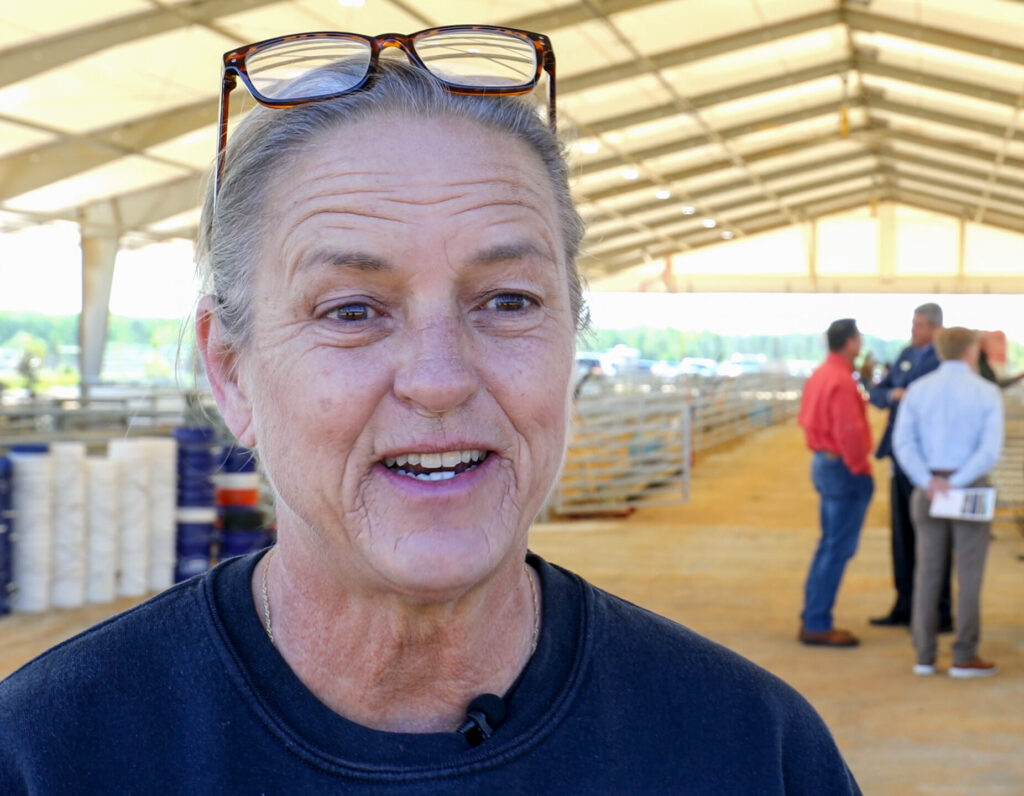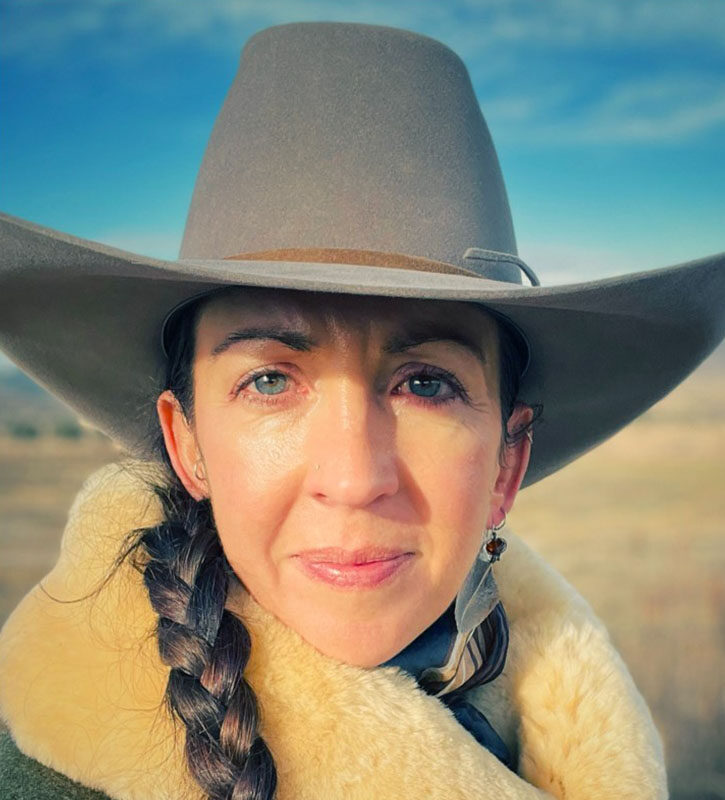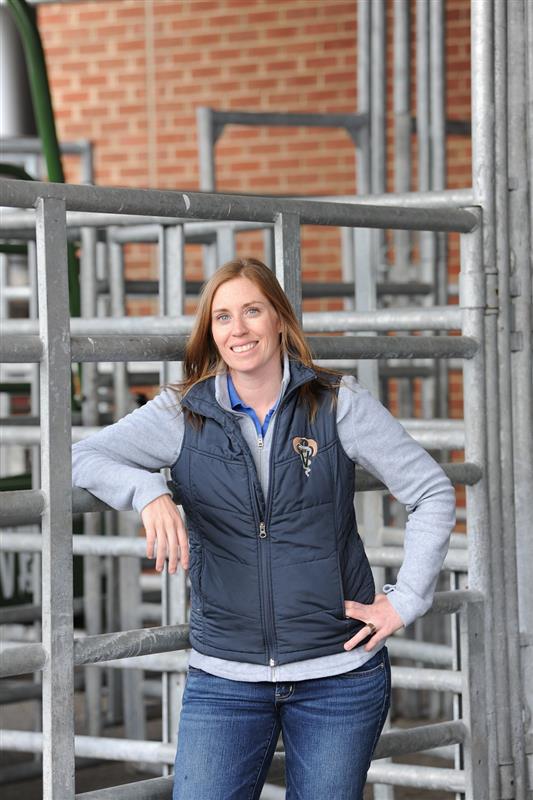Women’s History Month is an opportunity to reflect on women’s historic contributions to social, economic, and technological progress but also to celebrate the work women are doing today to shape a brighter future for our communities.
At Silicon Ranch, we have the good fortune of partnering with many remarkable women who are innovating and improving best practices in the energy and agriculture sectors. We’ve asked three of our female partners in the agriculture sector to share a little bit about their line of work, how they learned about and connected with Silicon Ranch, and what motivates them to do the work they do:
- Roxanne Newton, an internationally renowned breeder of Katahdin sheep and an invaluable partner for our Regenerative Energy® agrivoltaics team as they look to grow Silicon Ranch’s genetic improvement flock located at our Houston Solar Project.
- Anna Clare Monlezun, PhD, a Rangeland Ecosystem Scientist, a rancher, and the founder of Graze, LLC. Her work with Silicon Ranch’s CattleTracker™ project is helping make grazing cattle on solar farms a scalable reality across the United States.
- Dr. Andrea Lear, an Assistant Professor in the Department of Large Animal Clinical Sciences at the University of Tennessee (UT), where she is a practicing clinical veterinarian and veterinary scientist. Dr. Lear has facilitated a mutually beneficial relationship between Silicon Ranch and UT’s College of Veterinary Science.
Learn more about these remarkable women in their own words below.
Q: How did you come to be in your line of work, and what inspired you to pursue it in the first place?
Roxanne: We began rescuing dogs while living in the suburbs and decided we’d all be happier if we moved out to the country. My husband and I were both busy medical professionals at the time, so we were looking into a species of livestock that would be easy to handle and that would graze the land, eat the weeds, and mow the grass. After a lot of research, we decided on sheep. My grandmother had a small flock of sheep in the 1920-30’s. When she sold her lambs, she hid the cash in a large mason jar in the cellar. When the Great Depression came along, it was that jar of money that saved the family farm from foreclosure. So, I felt compelled to pick up where she left off and make a difference.
Anna Clare: I’ve always had a deep attraction to grassland and rangeland landscapes. I think they are the most beautiful places on Earth. I have also always loved animals, especially horses and large herbivores, so working in the interface of ranching and conservation is the perfect fit for me as a researcher, writer, and consultant.
Andrea: Like many veterinarians, I had a strong love of animals as a child that remained strong throughout my education. My passion for animal care and science led me to pursue a career where I could combine both interests. Currently, I am an academic veterinarian and veterinary scientist at the University of Tennessee, College of Veterinary Medicine. In my current role, I am a livestock veterinarian working primarily with food-producing species, including sheep, and I teach clinical practice to veterinary students. This position allows me to merge my love for animals with my desire to educate the next generation of veterinarians.
Q: How did you first come into contact with Silicon Ranch and how has your relationship with the company developed?
Roxanne: Jim Malooley, Silicon Ranch’s Director of Agrivoltaics Operations, hired me to provide consultative services for the company’s sheep flock, focusing on data collection and genetic selection for parasite resistance so that they are better suited for the Southeast. I mentored Jim years ago when he was a new shepherd, so he was familiar with my knowledge and experience as well as my participation in the National Sheep Improvement Program (NSIP) and numerous U.S. Department of Agriculture research studies. The major focus of this research was to identify the DNA markers for parasite resistance and other economically important traits. My flock was one of the first to provide data and tissue sampling of sheep used for mapping the sheep genome. I believe that Silicon Ranch is in a unique position to continue this important research at scale to make a significant positive impact on the sheep industry for years to come.
Anna Clare: I first came into contact with Silicon Ranch in 2017 when I was contracted to provide an ecological impacts analysis on one of their first sheep grazing agrivoltaics endeavors in Colorado. Then, right as I was finishing graduate school in 2022, Silicon Ranchwas securing an exciting research grant from the U.S. Department of Energy looking at ecosystem dynamics and cattle integration, and I got hired as the research lead for this project. It was my first big contract right out of the gate, and it has evolved into such an incredible line of work.
Andrea: The relationship developed naturally. I was initially contacted to consult with a local sheep producer [Jim Malooley] about some herd health-related questions. We developed a professional relationship where I consulted on flock-related questions, and Jim would take the time to lecture to clinical veterinary students regarding his sheep management practices. Our mutual relationship has further grown, allowing future veterinarians to learn from the large sheep flock maintained by Silicon Ranch. This collaboration has been mutually beneficial, providing valuable hands-on learning experiences for students and enhancing the health and productivity of the flock.
Q: What are the most rewarding aspects of your work?
Roxanne: I’m most proud of having the determination to stick with the goals I set 20 years ago. It’s so easy to get distracted with the latest fads (yes, there are fads in raising livestock). Currently, I am one of only three breeders that select intentionally on genetic resistance to parasites. Parasitism is the most common cause of death in sheep and results in significant economic loss to farmers. There is no greater satisfaction than to hear back from customers about how my sheep genetics have transformed the health of their flocks. But perhaps the most rewarding aspect is the opportunity I’ve had to educate and mentor new shepherds. As a founding member of a nonprofit sheep organization that focuses on educating shepherds throughout the country, our goal is to improve sheep productivity, farm profitability, and animal resilience in U.S. flocks. Working with Silicon Ranch has given me the opportunity to work with what is the largest Katahdin flock enrolled in the NSIP and to continue participating in research on parasite resistance with the goal of making available some of these highly selected animals to other producers within the U.S. sheep industry.
Anna Clare: The most meaningful aspects of my work involve seeing change right before my eyes and getting to collaborate with the people whose hearts and minds contribute to that change. We are shifting paradigms, discovering ways to better steward our lands and animals, while providing necessary goods and services for our communities. We are learning from our past mistakes in industrial agriculture and making huge strides as we create solutions that are holistic and systems-based. It is such a beautiful and exciting time to be working in this arena.
Andrea: I absolutely love connecting with farmers and ranchers. It’s incredibly rewarding to help their animals, which directly impacts their family. On top of this, I get to perform this wonderful work alongside future veterinarians, allowing myself to assist their development as food animal practitioners who will make an even broader influence through their careers. Witnessing students grow into competent professionals who can make significant contributions to animal health and welfare is immensely fulfilling. Additionally, seeing the positive outcomes of our interventions on livestock health and productivity reinforces the importance of our work.

Roxanne Newton is the owner of Hound River Farm in Hahira, Georgia, which she operates with her husband Milledge. They raise registered Katahdin sheep on 240 acres of farmland on the coastal plains of South Georgia. Roxanne is an internationally renowned breeder of Katahdin sheep. Her expertise on the process of improving the genetic composition of Katahdin flocks for health, hardiness, and parasite resistance has made her an invaluable partner for our Regenerative Energy® agrivoltaics team as they look to grow Silicon Ranch’s genetic improvement flock located at our Houston Solar Project in Elko, Georgia. Silicon Ranch’s genetic improvement flock located at our Houston Solar Project in Elko, Georgia.

Anna Clare Monlezun is a Rangeland Ecosystem Scientist, a rancher, and the founder of Graze, LLC, which she established to provide independent research, consulting, facilitation, advisory, and translational services for land stewards, ranchers, innovators, and employers of management practices for regenerative outcomes and long-term sustainability. Anna Clare is also a Research Lead on Silicon Ranch’s CattleTracker™ initiative, a project undertaken in concert with the Department of Energy and Colorado State University to develop a methodology for grazing cattle under solar panels in a way that is good for the land, good for the animal, and good for solar electricity generation. Anna Clare’s work with Silicon Ranch’s CattleTracker Research Group is in the process of making cattle agrivoltaics a scalable reality across the United States, with a patent for the CattleTracker methodology having been awarded in January, 2025.

Dr. Andrea Lear is an Assistant Professor in the Department of Large Animal Clinical Sciences at the University of Tennessee (UT), where she is a practicing clinical veterinarian and veterinary scientist. Her professional interests include participation in farm animal veterinary practice, advancement of animal agriculture, leadership in organized veterinary medicine, and training of future veterinarians & animal scientists. Dr. Lear has facilitated a mutually beneficial relationship between Silicon Ranch and UT’s College of Veterinary Science, introducing our Regenerative Energy® team (and our sheep) to her fellow instructors and her veterinary students. In 2024, a group of Dr. Lear’s fourth-year students vasectomized over 30 rams from our company-owned flock of sheep, and we had the pleasure of welcoming the same group of students to our DeSoto Solar Project for pregnancy scanning in December, and for a week-long stay in the 2025 lambing season. This partnership has been a perfect fit for both Silicon Ranch and for the university’s College of Veterinary Medicine. Our shepherds benefit from top-line reproductive services while the students are exposed to the needs of larger small ruminant producers—a specialty that has become less common among veterinarians after decades of very little demand.